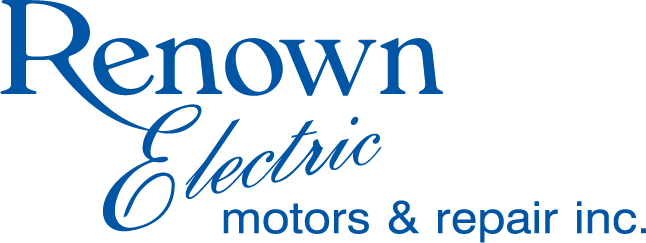Heavy industry sectors rely on large-scale electric motors and generators to power critical equipment like pumps, compressors, ball mills, rolling mills, and mine hoists. However, even with rigorous preventive maintenance programs in place, these critical assets can unexpectedly fail, having an adverse effect on customer commitments, revenue, and profitability.
Working with a trusted service provider to develop motor contingency plans for your critical assets can help ensure a rapid return to normal business operations and output. By planning ahead with proactive repair plans, you also provide your customers with peace of mind, setting your company apart from the competition. This guide highlights the advantages of contingency plans versus the consequences of lacking a contingency plan.
Financial Impact Without a Contingency Plan
 The negative financial effects of unexpected motor or generator downtime can cost hundreds of thousands of dollars in lost revenue per day, not including other ancillary costs for emergency repair service. For example, if the loss of a critical motor creates a loss of $100,000 per day and the number of days it will take to repair is roughly 30 days, the cost of a forced outage could be as high as $100,000 x 30 days, resulting in as much as $3 million, plus ancillary costs and the negative impact on client deliveries.
The negative financial effects of unexpected motor or generator downtime can cost hundreds of thousands of dollars in lost revenue per day, not including other ancillary costs for emergency repair service. For example, if the loss of a critical motor creates a loss of $100,000 per day and the number of days it will take to repair is roughly 30 days, the cost of a forced outage could be as high as $100,000 x 30 days, resulting in as much as $3 million, plus ancillary costs and the negative impact on client deliveries.
Plant Savings with a Contingency Plan in Place
Alternatively, when you have developed a contingency plan for a critical motor or generator, downtime losses can be reduced by as much as 30%. For example, if the standard emergency repair for a critical motor takes 45 calendar days, by developing a contingency plan for that asset, you can reduce the repair time by 15 days. Based on a revenue stream loss of $100,000 per day, the savings could be up to $1.5 million with far less client impact.
Contingency Plan Development – Basic Steps
There are two components to contingency planning: plant contingency planning and repair shop contingency planning.
Plant Contingency Planning
To fulfill your plant’s responsibility for contingency planning, you must:
- Identify your plant’s critical motor and generator assets
- Examine the logistics involved for removing and reinstalling these assets to determine the most efficient way to do so
- Identify any special services or tools that you will require, such as cranes, scaffolding, rigging, or trades, and assure their availability
Repair Shop Contingency Planning
Contingency planning is more involved when it comes to the repair shop responsibility. To best cover all possible outcomes, you should:
- Develop a contingency plan for each motor. When creating a contingency plan, keep it simple by planning on no more than one to three hours for each motor. Make templates to keep your format consistent for all motors.
- Create a repair timeline. A comprehensive contingency plan will include a timeline for both standard and emergency repairs. Rather than using Microsoft Project, Excel will be sufficient for developing your timelines.
- Identify the necessary variables. As part of your plan, include acceptable transportation services and whether or not team driving is required for long distances to expedite shipping. Also, determine if there are any special requirements to account for, such as blocking, tarping, and stands.
- Gather all technical data. This should include motor manuals, outline drawings, and winding data, as available.
- Acquire a spare parts list from the plant. Your list should cover such components as bearings, seals, heaters, RTDs, brushes, brush boxes, slip rings, commutators, and equalizers.
- Compile and document key contacts. Your contingency plan should include contact information for the plant, repair shop, and your suppliers.
- Draft a contingency plan. Incorporating the above information, write up your contingency plan. Your final copy should be saved in a PDF file format and, if desired, a physical three-ring binder for your technical library.
- Plant approval and implementation. Once your draft is complete and the contingency plan is fully approved, you’ll turn theory into practice by implementing your plan.
How Renown Electric Can Help
Forced outages can negatively affect your business, mostly through expensive downtime, increased labor, and higher repair and replacement costs. Fortunately, Renown Electric Motors & Repair Inc. can assist you in avoiding such major problems by helping you develop cost-saving contingency plans and other support services.
We understand the effects of downtime on your business, and so Renown Electric provides you with a customized Total Care Support Cost plan to help you sustain successful operations at a fixed, affordable price. Our expert team will use our advanced technology to inspect your electric motors, with capabilities including laser alignment, infrared thermography, dynamic balancing, and analysis for oil, winding, vibration, and motion amplification. Contact us today to learn more about our products and services.


